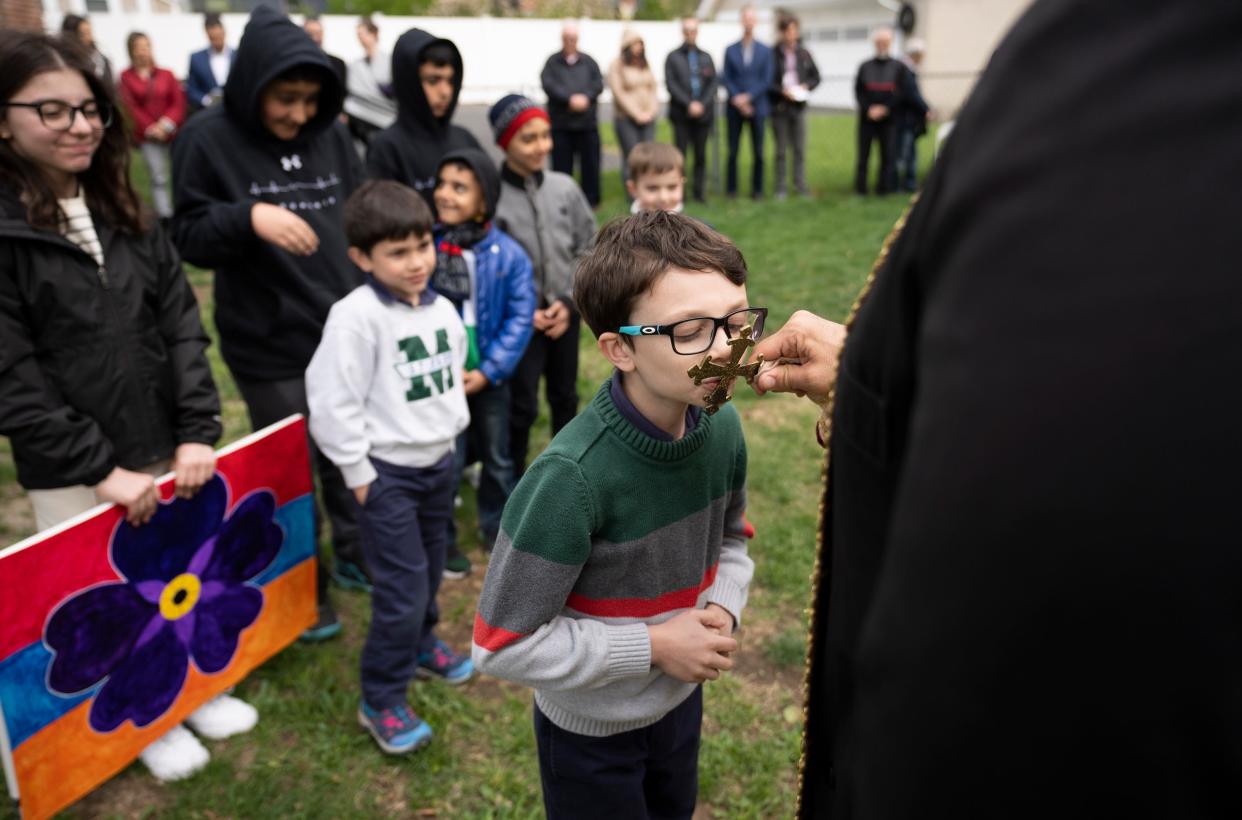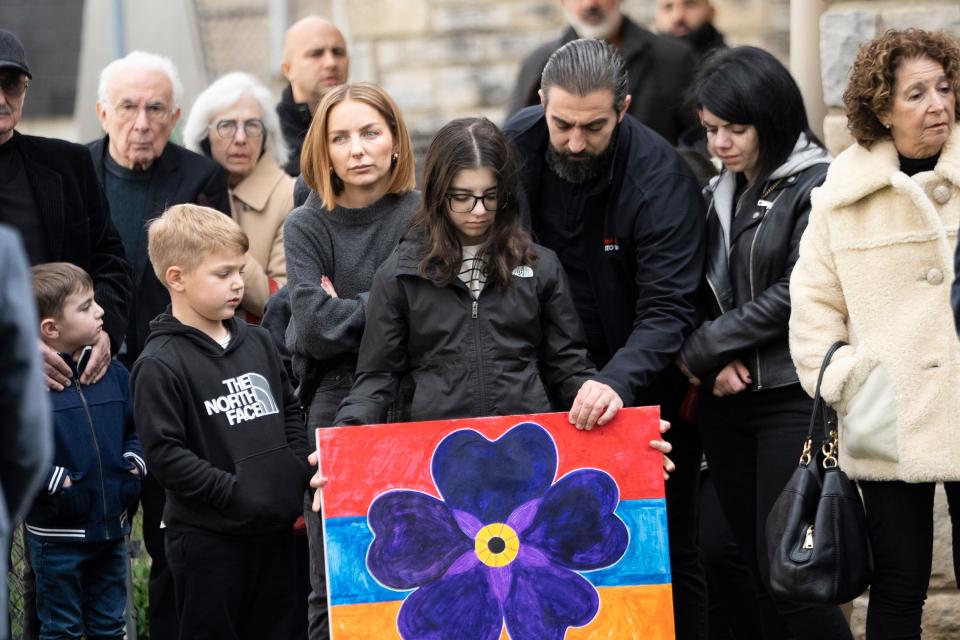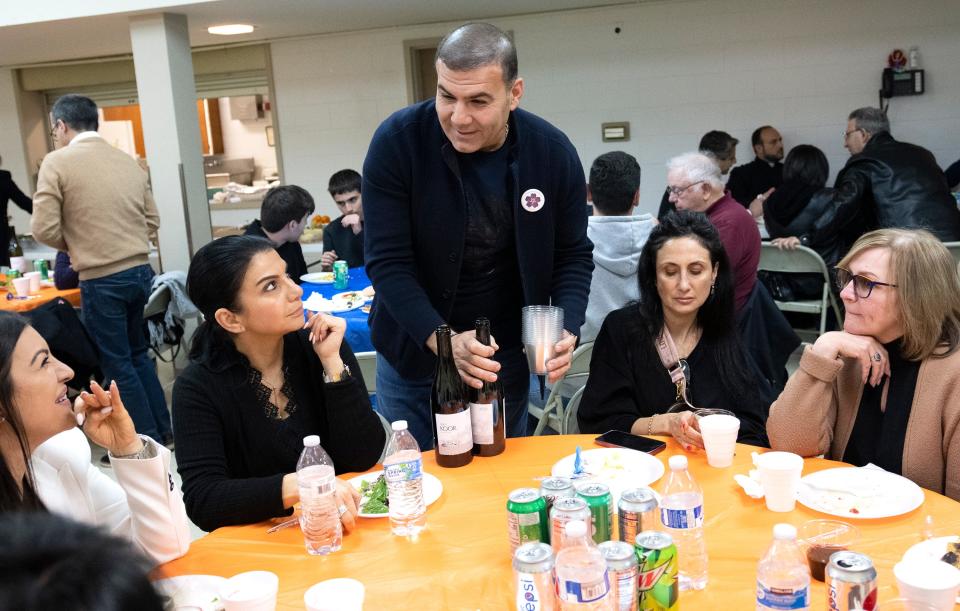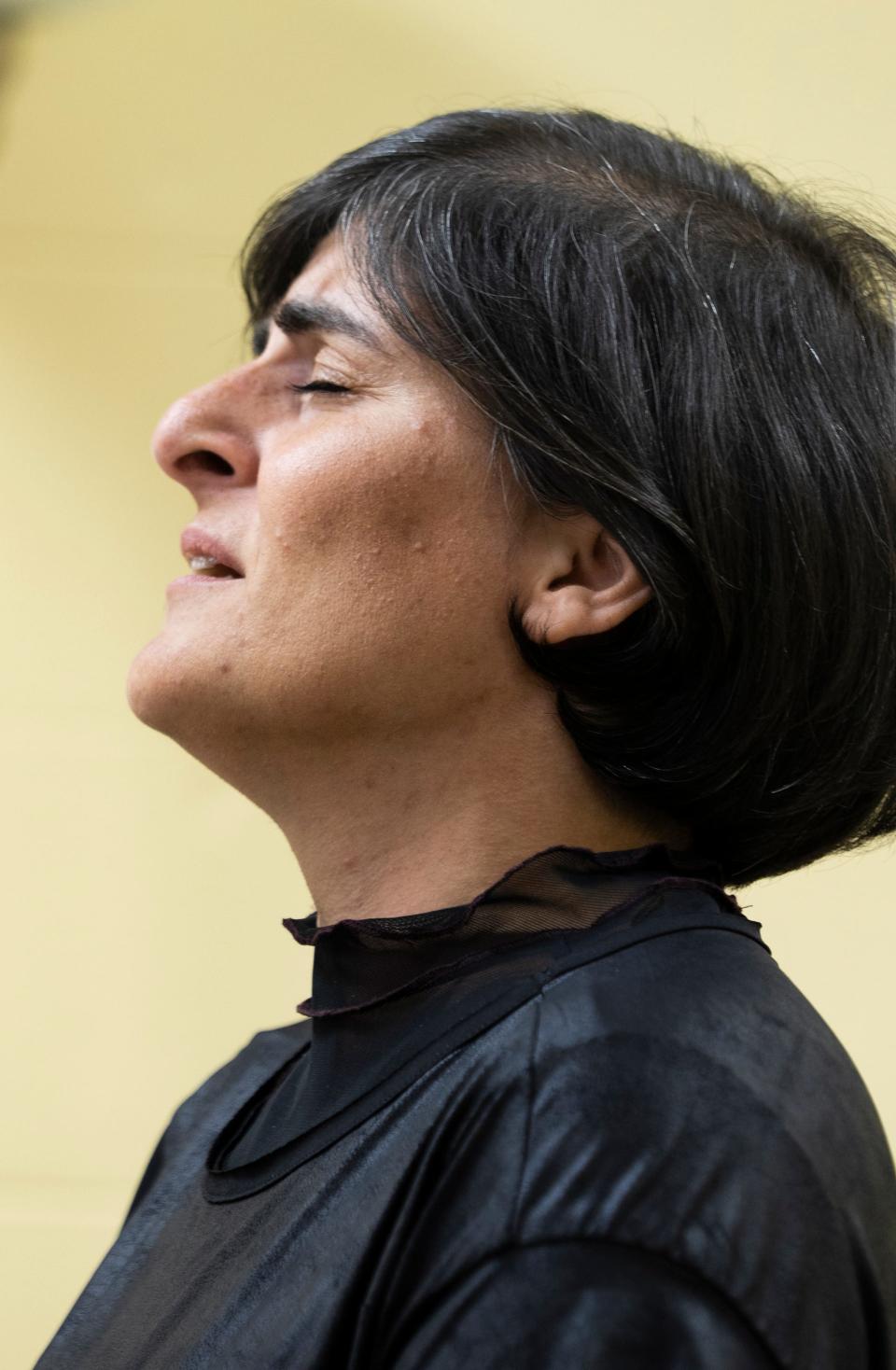"If genocide is denied, genocide continues": 108 years later, Columbus' Armenians remember

- Oops!Something went wrong.Please try again later.
As frankincense and myrrh wafted through the chilly evening air, young children, working parents and the elderly gathered below an old oak in their churchyard to listen to a prayer for the dead.
The Rev. Hratch Sargsyan stood in front of the roughly 75 worshippers and, speaking in a mix of English and old Armenian, conducted a service for the victims of a genocide that began 108 years ago on this past Monday.
Azniv Torosov, 79, a grandmother of three from Pickerington, teared up. She said that when her mother was 7, she witnessed Torosov’s grandfather being murdered before she fled what is today Turkey and settled in Azerbaijan, where Torosov was born.
Almost everyone in the congregation seemed to have a similar story of a family member killed in the Armenian genocide, during which Ottoman authorities orchestrated the deaths of between 664,000 and 1.5 million people. April 24 is observed as a day of remembrance by the Armenian diaspora around the world.
“The reason we remember, and we demand recognition and reparations, is because if genocide is denied, genocide continues. It happened to us. It happened to Jewish people. It happened in Rwanda,” Sargsyan told the crowd.

Congregants bowed in front of a six-foot tall cross-stone known as a khachkar, bedecked with bouquets of carnations and tulips, then filed inside for dinner in the basement of the St. James Episcopal Church in Clintonville, which shares space with the Armenian Apostolic Orthodox Church.
The local congregation has about 120 Armenian American families, according to Sargsyan.
Although the Turkish government disputes the use of the term “genocide,” historians have reached broad consensus that that is what happened during the last throes of the Ottoman Empire. The Young Turk government viewed with suspicion Armenians — a Christian ethnic minority in a Muslim-majority state — and feared they would rebel in alliance with Russia during World War I.
The purge began on April 24, 1915, when the government ordered Armenian intellectuals to leave Istanbul, and continued as between 664,000 and 1.2 million Armenians were killed in massacres or forced-marches into the desert, according to the United States Holocaust Memorial Museum.
In 2021, President Joe Biden became the first American president to recognize the genocide; he put the dead at 1.5 million.
“The historical record on the Armenian Genocide is unambiguous and documented by overwhelming evidence. It is proven by foreign office records of the United States, France, Great Britain, Russia, and perhaps most importantly, of Turkey’s World War I allies,” according to the International Association of Genocide Scholars, a non-partisan organization of researchers.
However, Turkish President Recep Tayyip Erdogan, a NATO ally, claims that the casualty figures are wildly exaggerated. Turkey has prosecuted writers who have dared to use the term “genocide.”
Armenian survivors fled what is today Turkey to Armenia and elsewhere in the Middle East, Europe and North America. In the U.S., the largest community is in California, according to the Armenian consulate.
Columbus’ Armenian community began to grow after Keteon Ares Menendian, an Armenian immigrant, began a local carpet business in 1910, according to Ohannes Tchobanian, 86, a retired engineer who lives in Clintonville.
Tchobanian said more Armenians like himself came to Franklin County in the following decades, attracted by jobs and studies at Ohio State University — especially after the fall of the Soviet Union, to which Armenia belonged until 1991.
David Krikorian, 54, a small business owner from Cincinnati, said Turkey’s continuing denial of the genocide is frustrating.
“Can you imagine a Germany today that denied that the Holocaust happened?” he said. “The simple act of denying the genocide is one of the stages of genocide.”
To spread awareness among youth, Krikorian recently co-authored "Operation Nemesis," a graphic novel about the events of 1915-16, copies of which he distributed on Monday evening.
Like several other congregants, Krikorian also expressed concern over the simmering conflict in Nagorno-Karabakh, the disputed territory that Armenia and Azerbaijan fought two wars over — most recently in 2020.
As congregants dined in the church basement on spanakopita, grape leaves and meatballs, Hagop Mekhjian, 85, gave a speech in which he recalled growing up in exile in Aleppo, Syria.

“In my pre-teen years, my father made absolutely sure I went to western Syria, to see the piles of skulls of people who had died in the desert, because of the genocide. I came home sad and cried” said Mekhjian, a retired doctor and OSU professor emeritus who lives in Upper Arlington. “As I grew older, I overcame my sadness. And today, (April 24) is a joyous occasion — it’s a celebration, it's a miracle that we’re here…. Don't don't forget the past. Learn and apply the lessons for the future.”
Before the event wrapped up, Sarah Khatcherian Milo, 44, of Dublin, performed a traditional Armenian folk song. The song, “Groong,” is about a crane — a common bird in Armenia — that visits a wanderer in exile.
Khatcherian, a professional opera singer, said it evokes nostalgia and the processing of grief. She translated the lines as:
"Oh crane, where are you coming from?
I am thirsty for your voice.
Do you have any news from our homeland?
You did not answer me and flew away,
Oh crane, fly away from our land."

Peter Gill covers immigration, New American communities and religion for the Dispatch in partnership with Report for America. You can support work like his with a tax-deductible donation to Report for America at: bit.ly/3fNsGaZ.
pgill@dispatch.com
This article originally appeared on The Columbus Dispatch: Columbus' Armenian community commemorate genocide

